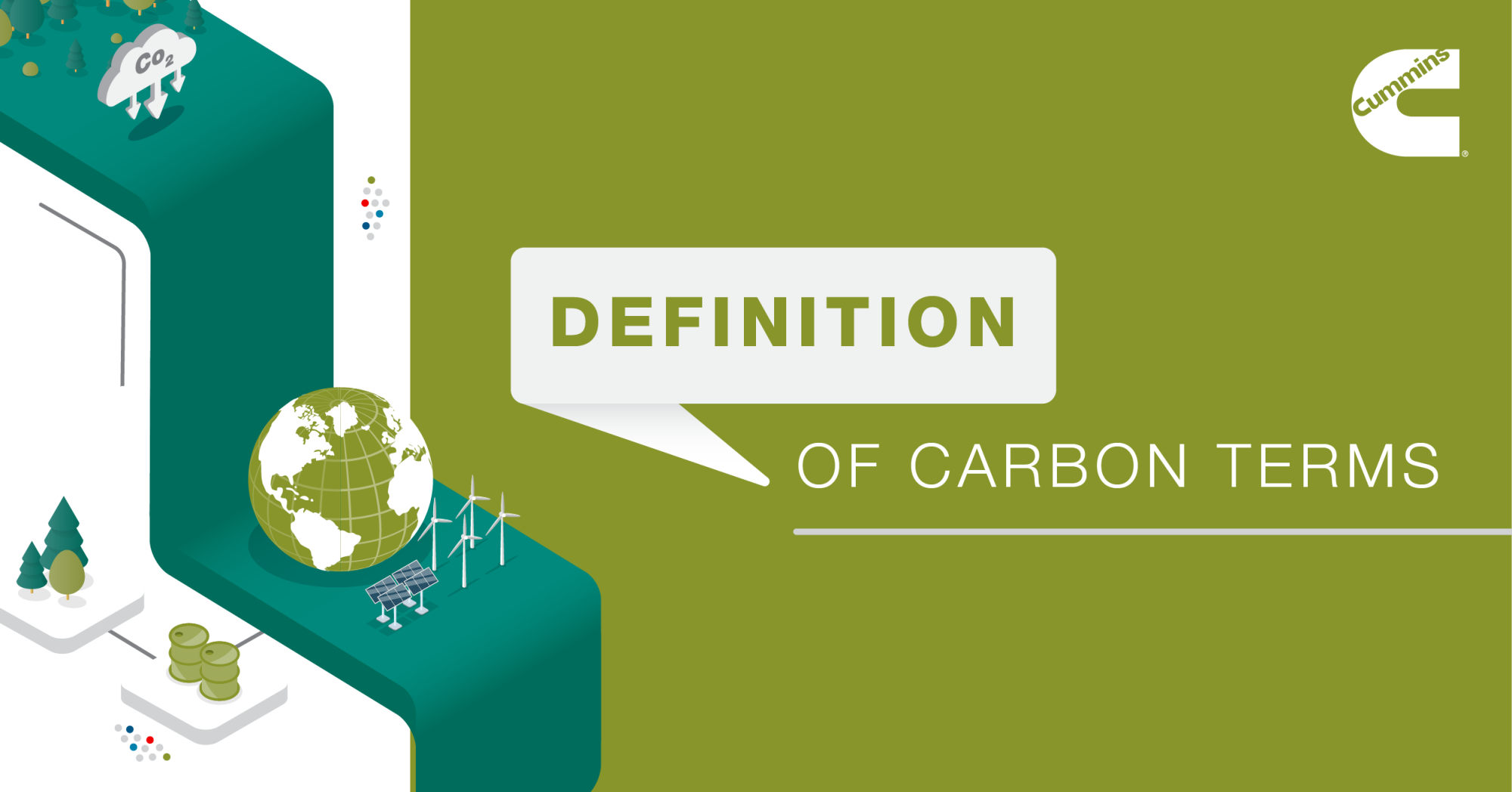Greenhouse gases to carbon neutrality and carbon negativity; an overview of popular emission terms
By Aytek Yuksel, Content Marketing Leader - Power Systems

In 2019, 90% of S&P 500 companies published sustainability or responsibility reports. In comparison, only about 20% of the S&P 500 companies had published a sustainability report in 20111. Whether you are a parent protecting the environment for your kids or a business professional safeguarding the long-term viability of your company through reduced environmental footprint, the focus on environmental sustainability, especially air quality, is on the rise, and it is well-needed.
This article brings you the basics around some of the common terms associated with air quality and emissions.

What are the different greenhouse gases (GHG)?
There are four primary greenhouse gases: carbon dioxide (CO2), methane (CH4), nitrous oxide (N2O) and fluorinated gases. These are called greenhouse gases since they contribute towards trapping heat within the atmosphere. The name greenhouse comes from the greenhouse facilities used to grow our plants. These greenhouse facilities trap the heat necessary for the growth of plants inside themselves; hence the name for greenhouse gases.
Why carbon emissions require the extra focus?
Longevity and abundance.
- Carbon dioxide emitted today lasts in the atmosphere for over a thousand years. In comparison, methane emitted today lasts about a decade; nitrous oxides emitted today lasts about a century.
- Abundance is the second reason; about 80% of human-made GHG emissions is carbon dioxide. Methane, which is the second most emitted GHG, makes up only 10% of total GHG emissions.
A combination of carbon’s longevity and its abundance result in extra focus put into the reduction of carbon emissions.
What is carbon neutral, carbon zero and carbon negative?
Carbon neutral means the carbon emitted from the activity is offset by other means such as carbon removal, purchase of carbon credits, planting trees or beyond. For example, your facility could be using low-emission diesel engines; meanwhile you deploy carbon removal technologies to offset your carbon emission to achieve carbon neutral electricity generation.
Carbon zero means there is zero carbon emitted as a result of the specific activity; hence no need for carbon removal to offset the initial emission. For example, fuel cells powered by green hydrogen would produce carbon zero electricity.
Carbon negative means that there is more carbon removed from the atmosphere than the activity or equipment’s carbon emission.
What are renewable energy credits and carbon credits?
Renewable energy credits (RECs) are a way for companies to contribute towards increased generation and use of renewable energy. Renewable energy credits are specifically focused on offsetting electricity use from non-renewable fuels. Meanwhile, carbon credits are more broadly focused on offsetting greenhouse gas emissions, beyond electricity generation.
Let’s look at a real-life example. Many data center operators purchase renewable energy and associated RECs. In cases where the renewable energy is produced in a location far away from the data center, the data center operator sells the renewable energy back to the grid and uses RECs to offset its carbon footprint. This approach gives the renewable energy provider the customer commitment to invest in new projects. In other words, this approach delivers an increasing amount of renewable energy to the grid for all of us to use. Meanwhile, critics highlight that this approach doesn’t necessarily reduce the data center’s carbon contribution.
What is nitrous oxide emissions’ role as a greenhouse gas?
Nitrous oxides are commonly recognized as the cause of the smog present in urban locations with busy vehicle traffic or space heating needs. While there is less nitrous oxide emitted by humans compared to carbon dioxide and methane, nitrous oxide’s potent nature makes it an important greenhouse gas. It is estimated that one pound of nitrous oxide and 300 pounds of carbon dioxide have the equivalent effect on warming the atmosphere2.
What has been done to reduce diesel engine emissions?
Diesel engines are used in many applications ranging from on-highway vehicles, such as buses and trucks, and off-highway vehicles, such as mine trucks, boats and locomotives; to stationary applications such as back-up power generators in healthcare facilities, data centers and other buildings.
Over the last two decades, diesel engines’ emission of key pollutants has been significantly reduced through regulations. For example, a typical Cummins diesel engine used in a mining application emits 90% less particulate matter (PM), oxides of nitrogen (NOx) and hydrocarbons (HC) compared to engines produced before the year 20003.
It is broadly agreed that carbon zero and carbon negative technologies are the final destination in our environmental sustainability journey. The path towards our destination will feature a diverse set of technologies ranging from microgrids and stationary energy storage to fuel cells and renewables.
Sign up below for Energy IQ to periodically receive energy and power insights. To learn more about power solutions Cummins Inc. offers, visit our webpage.
References:
1 2020 S&P 500 Flash Report (July 16th, 2020). Governance & Accountability Institute Inc. [Pdf file]. Retrieved from https://www.ga-institute.com/
2 Nitrous Oxide (n.d.). North Carolina Climate Office [Web page]. Retrieved from https://climate.ncsu.edu/
3 Cummins Tier 4 Final High-Horsepower Engines For The Mining Industry. (n.d.). [Pdf file]. Retrieved from https://cummins.com
Author Profiles

Aytek Yuksel, Content Marketing Leader - Power Systems
Aytek is a marketing leader at Cummins, focusing on technology and thought leadership. Since joining in 2008, he has held various marketing roles and now shares insights on markets, technologies, and energy transition. Aytek lives in Minneapolis with his wife and two kids.
Related Tags